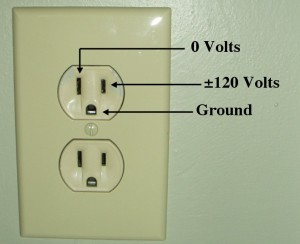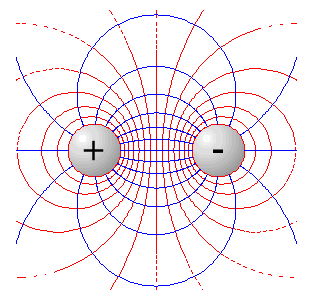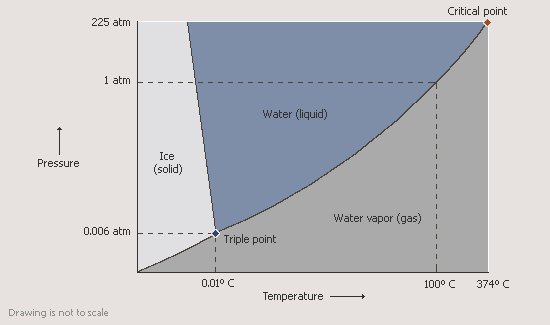Mathematician: Imaginary numbers arise quite naturally when you start asking certain basic mathematical questions. Probably the best example is the following: Once we know how to multiply and add, we might ask ourselves “are there any numbers x that satisfy the equation ?” The answer is yes,
and
both satisfy it. If we try some more equations of this form, we might at some point ask the similar question, are there any numbers x that satisfy the equation
? None of the ordinary (real) numbers satisfy this property. If we are feeling lazy we can stop there and say that this equation can’t be satisfied. But, if we are feeling creative, we might assume for a moment that there is a (special) number that satisfies this equation, (we’ll call it the number
), and then see if we can derive its properties. By definition, of course, our number
satisfies
, but we can ask other questions about this bizarre number, such as “what is
for any positive integer n?” Some simple calculations show us that
is either equal to
,
,
, or
depending on the value of n. We will now say that
is an “imaginary number”, as is any multiple of
, such as
and
. We can now also introduce what we are going to call “complex numbers”, which are formed by the sum of a real and an imaginary number, such as
,
,
and
. It is not too hard to show that complex numbers yield a consistent theory, in the sense that when you add them, subtract them, multiply them, or divide them, you get a complex number back as the result of the operation. Furthermore, it turns out that all polynomial equations (which includes the equations
and
that we considered before, as well as others like
) have at least one complex number solution (notice that real numbers are also complex numbers because, for example, we can write
as
). That means that no other weird types of numbers need to be introduced in order to find solutions to these equations, so complex numbers are “enough” to find every polynomial equation solution.
Okay, so maybe imaginary and complex numbers make sense to introduce and lead to a reasonable theory, but how could they possibly be useful? After all, in the real world we have real numbers of things (e.g. 3 frogs) and real amounts (16.2 dollars), not imaginary numbers of things. As it turns out, complex numbers are fantastically, staggeringly useful. This is especially true once we allow ourselves to start plugging complex numbers into functions (like ,
,
, etc.) , and see what output they produce. For example, imaginary numbers give us a useful and surprising link between the exponential function
and the sine and cosine functions, in Euler’s beautiful formula:
We see this funny object, surface again in an essential way in the subject of Fourier Analysis, which finds applications in the study of heat flow, signal processing, music filtering, data compression, image processing, and many other areas (in fact, one of the most referenced applied math papers of all time relates to how to quickly approximate a sum involving
on a computer in order to do a discrete version of Fourier Analysis). Complex numbers pop up again in the theory of Taylor Series, one of the most used mathematical tools ever invented. One way to think about this is that Taylor Series provide a method for locally approximating a function using polynomials, and the region in which such approximation succeeds depends in a crucial way on the function’s behavior when it’s thought of a function of complex rather than real numbers. Complex numbers make an important appearance yet again in the theory of matrices. When we have a matrix (which is like a grid of numbers) that has only real numbers, and we want to split it apart into multiple matrices (via an eigen vector decomposition, let’s say) we discover that in general the matrices we divide it into may have complex (non-real) entries! What’s more, questions about prime numbers, solutions to problems in electrical engineering and the differential equations in quantum mechanics are deeply connected to complex numbers. The list of ways in which complex numbers appear (in a fundamental way) throughout mathematics is truly enormous.
Fine, so imaginary and complex numbers arise naturally and are extremely useful, but do they really exist? Well, this raises deeper (or should I say, different) questions, like whether numbers in general exist. Sure, numbers (complex or otherwise) exist as concepts in our brains, but no numbers ever appear in the physical world. We can see 3 cats, or the symbol “3” scrawled on a sign, but we will never see the actual number 3. Imaginary numbers, like real numbers, are simply ideas without any physical existence. They are both very useful (though with real numbers, it is much more obvious why that is so). But it is hard to see how one would (convincingly) argue that real numbers actually exist while imaginary numbers do not.
Some commentators have taken my argument above to imply that I think numbers (including imaginary numbers) actually exist (perhaps in some platonic sense). However, as was pointed out, this hinges very much on your definition of “exist”. Although the idea of numbers is very natural (you might almost say “obvious”), and probably would have been invented by almost any highly intelligent beings that may have happened to inhabit our planet, they are indeed still simply just an idea that we created. They lack physical existence, but “exist” in our minds as much as any ideas do.














